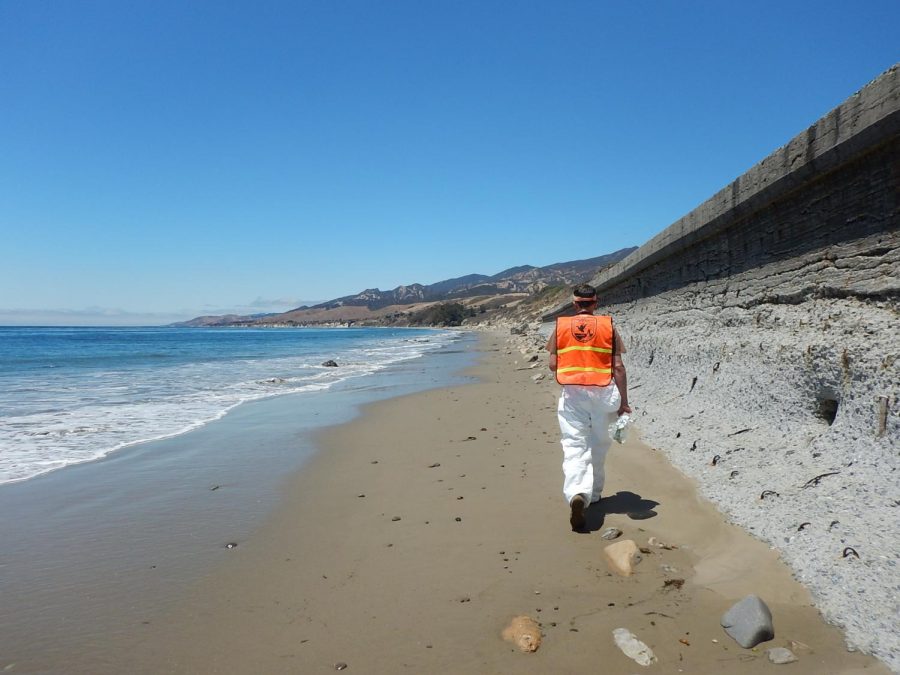California oil spill exemplifies the demand for a drilling ban
October 22, 2021
The recent oil spill off the coast of Southern California exemplifies the dangers of offshore drilling and necessitates a ban on future drilling.
Roughly 126,000 gallons of oil gushed into the Catalina Channel and created a slick that spanned about 8,320 acres. Beaches were closed, fishing was banned and local wildlife were killed.
It is suspected that a dragged anchor caused the spill.
“The anchor dragged the pipeline as much as 150 feet,” The Los Angeles Times reported. “Vessels are given anchor points in order to avoid pipelines.”
The shipping industry must also be a part of preventing future spills. It needs to take action immediately, including developing a procedure to prevent anchor dragging and marking the location of pipelines on maps used by shipping and training shipping crews.
“This oil spill is a tragic reminder that offshore drilling is a devastating threat to our coast and its wildlife,” Miyoko Sakashita, director of the Center for Biological Diversity’s Oceans program, said. “I’ve seen the aging oil platforms off Huntington Beach up close, and I know it’s past time to decommission these time bombs.”
While the perils of offshore drilling are well known, this recent spill highlights the need for permanent laws preventing future offshore drilling.
California blocked all new offshore oil drilling in state waters after the 1969 Santa Barbara spill. In 1994 the state passed the California Coastal Sanctuary Act, which prohibited new leasing in state waters and no new offshore drilling has been allowed in federal waters along the Pacific Coast since 1984.
Former President Donald Trump’s administration threatened the ban with a proposed five-year offshore leasing plan in 2018 that would open the entire West Coast to new drilling.
While the proposal was blocked by courts, only a permanent ban will eliminate the threat entirely.
Efforts to create new offshore drilling directly defy the will of the people. Nearly 70% of Californians opposed offshore drilling, according to polling by the Public Policy Institute of California.
Oil spills not only pose a threat to marine life but also to the economic stability of coastal towns. These areas are largely reliant on waterfront activities and closures caused by the oil spill jeopardize their way of life.
To address the demands of both their constituents and local ecosystems, government representatives must rally around legislation banning offshore drilling.
In May, Rep. Mike Levin introduced legislation to prohibit any new leasing for the exploration, development or production of oil or natural gas along the Southern California coast, from San Diego to the northern border of San Luis Obispo County.
Sen. Dianne Feinstein also introduced the West Coast Ocean Protection Act.
“This spill highlights why we must also take action to prevent future spills, including passing the West Coast Ocean Protection Act. Our bill would permanently ban oil and gas drilling in federal waters off the coast of California, Oregon and Washington,” Sen. Dianne Feinstein said in a statement.
In the meantime, safety monitoring of existing offshore drilling must happen immediately, and it needs to be conducted by a third party, not the owners of the drilling.
Although it will cost oil companies money to invest in better safety measures, these costs are motivated by the fact that companies will not have to spend large amounts of money cleaning up oil spills.
While a long-term plan to limit or eliminate drilling works its way through the political arena, an immediate plan needs to be implemented to monitor the existing offshore drilling.
Until such preventative measures are in place, neither wildlife nor residents are safe.








